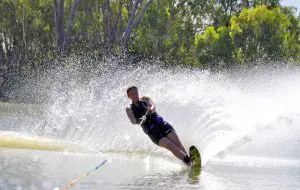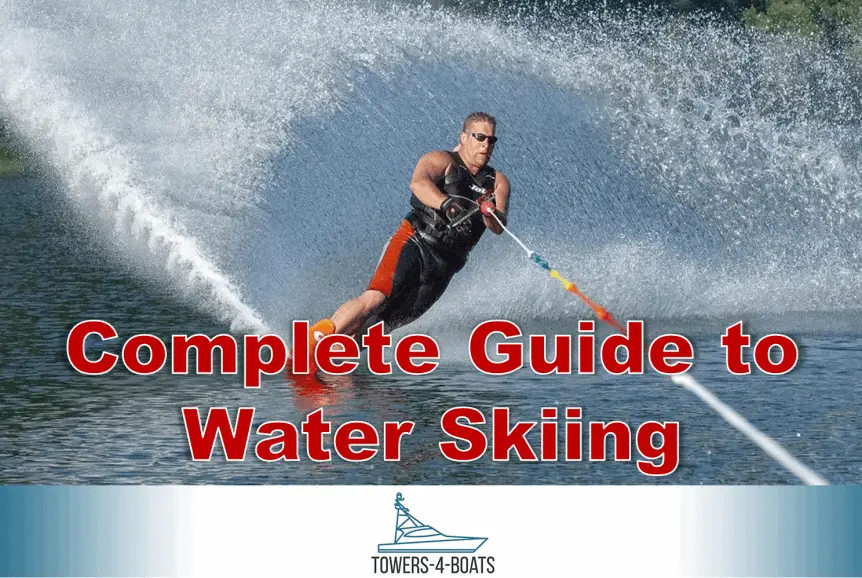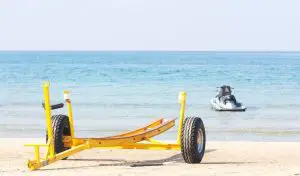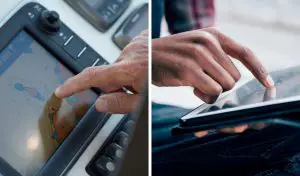Guide to Water Skiing
Water skiing is a popular sport that gives you a hefty adrenaline rush. Generally, there are three kinds of water skiing: slalom skiing, trick skiing, and jump skiing.
Slalom Water Skiing
Out of the three types, slalom skiing is the most popular. With the ever-increasing power of motorboats, water skiing at higher speeds has become irresistible. Humans can’t say no to anything that is going to get us high on adventure and adrenaline. So, faster motorboats simply mean more extreme water skiing! That is essentially what slalom skiing is.
Slalom skiing involves the use of just one ski, called a slalom, which is designed to cut through water at high speeds to maneuver around obstacles (buoys).
There are slalom water skiing competitions all around the world. In these competitions, skiers are made to make their way around a course of 26 buoys to make a complete pass. Of those 26 buoys, the skier must pass through six of them in a zig-zag pattern.
And yet, it gets much more interesting. After every pass, the speed of the motorboat is increased by 2mph (3km/h) until the maximum speed has been reached. For the men’s category, the maximum speed is 36mph (58 km/h), and 34 mph (55 km/h) for women. This way, every pass is more challenging than the previous.
The challenge isn’t over yet! At every pass after hitting the max speed, the rope is also shortened. However, a skier may decide the speed and the rope length with which they want to start. As a result, it’s common for professional slalom water skiers to start the course at their maximum speed and a 13-meter long rope.
The winner is determined by the final rope length and the number of buoys successfully passed.
Check out the Men’s Slalom Tournament to see the best skiers in the world.
Water Skiing Equipment
Before you’re ready to start water skiing, there is some basic equipment that you need to ski safely and successfully.
Tow Bar
Tow bars are attached to the rear of motorboats and have the tow rope attached. Sometimes, you may have an outboard engine motorboat that is not made for water-skiing. But you don’t need to worry about buying another boat, as you can easily get yourself a tow bar to attach to it.
Skis
Of course, you know you wouldn’t be able to get any skiing done without the ski itself.
There are skis for kids just as there are for adults. Children skis are always designed in such a way that either end of the tow bar is connected. This helps the younger skiers keep the skis together more easily. Adult skis don’t come with that luxury, because it is assumed that adults are strong enough to keep the skis together.
In addition, the size of the ski is not only dependent on the size of the skier, but also the type of skiing it is for. For example, jump skis are usually longer than any other kind of ski.
A typical children’s ski is just about 43 to 59 inches long. Adult skis often have sizes that range from 60 to 72 inches.
Life Jacket
Just like any other watersport, a life jacket is always essential. Even professional water skiers always need life jackets for safety purposes.
You may consider yourself a good swimmer and therefore you don’t need a life jacket. But imagine if an accident occurred and a collision knocked a skier unconscious. A life jacket would be able to keep them afloat and be easy to spot for the rescue team.
Gloves
Gloves are needed to have a firm grip on the rope, and to save your hands from getting easily fatigued from having to hold on for too long.
Bindings
Bindings are also important when it comes to water skiing. Bindings are the things you stick your feet into to firmly attach to your ski. You shouldn’t even think of water skiing without them!
Wetsuit
Of course, no one expects you to go water skiing in your regular, every day clothes. For any kind of waterskiing, wetsuits are the most practical things to wear, no matter the weather.
FAQ
Is water skiing dangerous?
There are physical injury risks. One could suffer concussions or lacerations if they collide with the water, buoys, or any other hard surface.
However, these injuries can be prevented when skiing responsibly. Water skiers are advised to always wear protective gear, and know their limit when skiing. Don’t attempt to ski at high speeds if you are not a professional.
How do you water ski?
Learning how to water ski is actually quite easy. After you learn about the basic safety rules and get the right equipment, all that’s left is to hit the water.
Make sure the motorboat driver starts out slowly at first, even if you think you can handle a higher speed. And then practice, practice, practice!
Is wakeboarding easier than water skiing?
There have been a lot of reasonable debates for either sport. Some might find wakeboarding easier because they are already familiar with similar board-sports. Others might find water skiing to be easier for them since they would be using two skis (except in slalom skiing) instead of the big snowboard-style ski used in wakeboarding. However, it all comes down to personal preference.
Conclusion
Well, what are you waiting for? Get water skiing!




